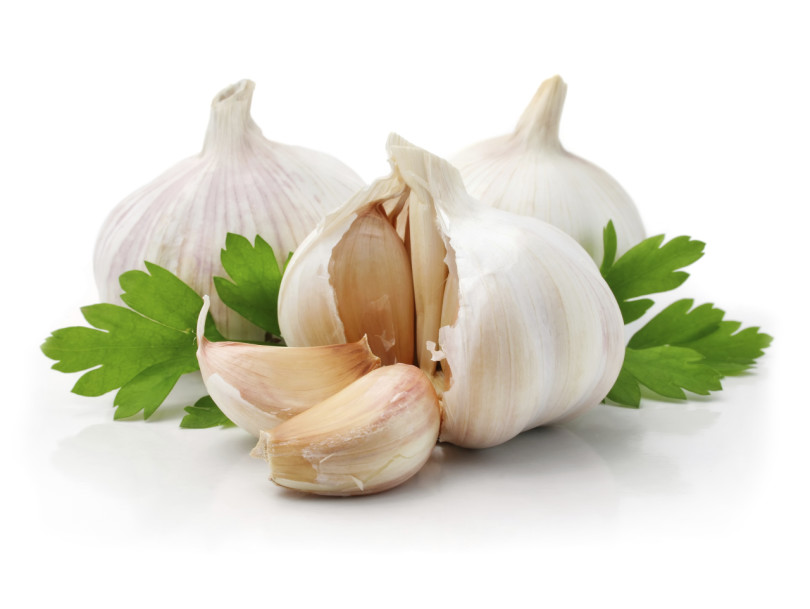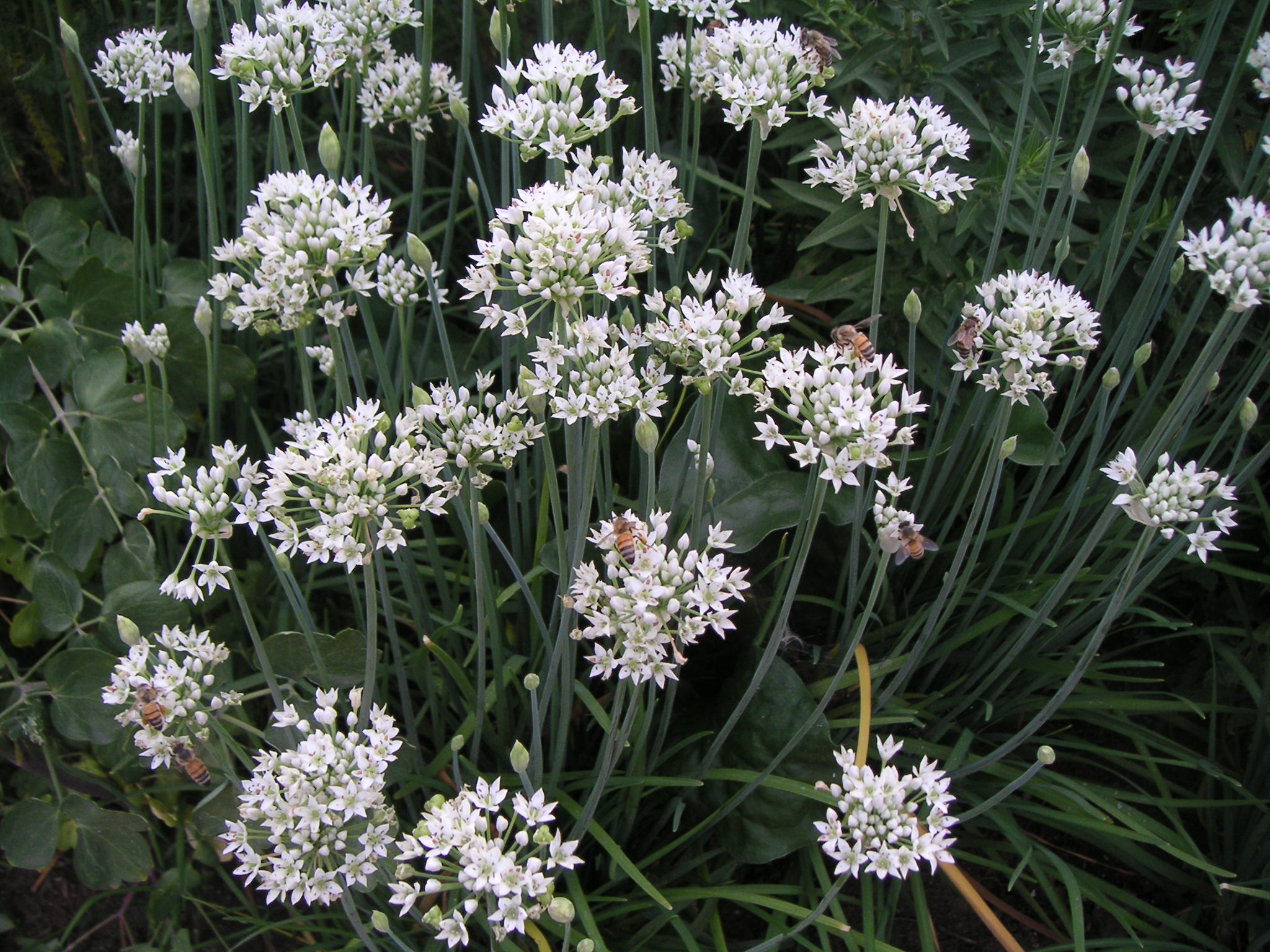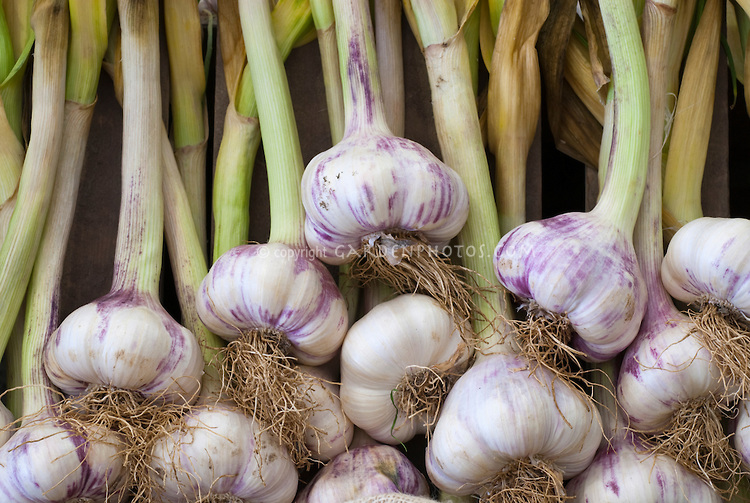Alium sativum L.
| Botanical Name | Alium sativum L. |
| Order: | Asparagales |
| Family: | Liliaceae |
| Genus: | Allium |
| Species: | A. sativum |
| Common Names: | Garlic (English) |
Plant Synonyms
Porvuim sativum relb
Plant Local Names
Burkina Faso: Moore – gando; Layi, Dioula - layi Adangbe – lali, Fulfulde –toume
Ghana: Twi – gyene kankan, Ga adangbe – aya,
Mali: Bambara – Tume, Tamachek – teskart
Nigeria: Hausa – Tafamuuwaa, Igbo – Oy ayon, Ayun, Yoruba – Alubosa, Ayuu
Senegal: Wolof – Laji, Manding bambara – layi
Togo: Ewe – ayo, Nima – ayo, Ouattchi – ayo
Plant Habitat
Originates from Central Asia, but now cultivated in many parts of the world, notably Europe, North Africa, Asia, and North America and the West African sub-region (GHP 2007; Burkill 1995; Adjanahoun et al., 1991).
Plant Material of Interest
bulb, Oil from bulb
Plant Description
An erect, hardy and bulbous perennial herb up to 60 cm in height, with a central bulb covered in scales in the axil, bulb consists of a number of cloves enclosed in a paper-like skin; leaves are long, flat and smooth, leaf blade is cylindrical, hollow, linear, flat and solid with an acute apex; spherical inflorescence with white to purplish-pink coloured flowers found on slender pedicels (Burkill 1995; and Gill 1982).
Plant Used Parts
Plant Uses
Garlic is cholesterol –lowering, antihypertensive, anti-coagulant, anti-dirrhoeal, anti-dysenteric, immune stimulant, sudorific, expectorant, anthelmintic, counter -irritant, diuretic, broad spectrum antibiotic and anthelmintic. It is used extremely for arthritis, corns, warts, nuuralepia (Elujoba and Olawode, 2004; Gill 1992; Adjanahoun et al., 1991), fever cough, flatulence, ulcer, hoarseness, bronchitis and other respiratory problems. Skin diseases burns, earache and tonsillitis, rheumatism, tuberculosis, typhoid, diabetes, arteriosclerosis, hyperlipidaemia and in the prevention of atherosclerotic (age-dependant) vascular changes.
Plant Therapeutic Action
Anti-hypertensive, antidiabetic, antithrombotic, antifungal, antioxidant, antibacterial, anti-inflammatory; antipyretic, antiscorbutic; antitussive, expectorant; GIT smooth muscle relaxant, antibacterial, digestive, anticoagulant; antihyperlipidaemic, carminative, diaphoretic, stomachic, antihyperhomocysteinemic
Plant Precaution for Use
Garlic should be taken with food (Corzo-Martinez et al., 2007) because exercise doses, especially on an empty stomach, may cause stomach upsets, fluatulencee, hertburm, nausea and diarrhoea and changes in the intestinal flora which may increase the risk of postoperative bleeding (Benkebila, 2004). Concomitant use with anticoagulants or medicines that prevent platelet aggregation (e.g. aspirin) may further prolong bleeding or clothing time
Plant Adverse Effect
Garlic may cause bad breath and body odour, allergic dermatitis, burns, blister and asthmatic effect
Plant Contraindication
Children below 12 years (can cause colic in babies), haemophilia, kidney disease, liver disease, prostate cancer, systematic lupus erythematosus; should be avoided in patients with disease, or damaged skin
Plant Dosage Forms
Intact bulb, decoction, tincture, tablets, capsules, Generally, the fresh bulb and the bulb oil can be given at 2-5 mg daily ( or one fresh bulb or clove 1-2 times daily) while the dose for the powder is at 400-1200 mg daily and tincture of 1:5 in 60% alchohol is given at 5 ml three times daily. These are the particularly high doses when garlic is used as antimicrobial, antihelmintic, antihypertensive, carminative, anti-lipidemic, antisoasmodic, anti-daibetic, and anti- inflammatory agent.
Plant Dosage
Plant Storage
Store in a cool dry place protected from light and moisture.
Plant Chromatographic Fingerprint
Analytical TLC on silica gel G60 F254, 0.25 mm layer in petroleum ether (40-60 Cychoroform anisaidehyde (0.5 ml) mixed with 10 ml glacial acetic acid, 85 ml methanol and 5 ml concentrated sulphuric acid heated to 100- 110C for 5-10 min. Presence of one characteristic violet spot with R,s, 0.75.
Plant Constituents
Volatile oil, consisting mainly of sulphur- containing substances such as diallyl sulphide, allin, allincine and allianase (Gill, 1992). Vitamin A, B, C, D and E, ajoenes (Chevailer, 1996), oleo-resins; amino acids; minerals (germanium, calcium, copper, iron, potassium, magnesium, selenium, zinc); saponin,; cyanogenic glycosides; thioglycosides and; vitamins, A, B, C, and D.
Plant Pictures
Plant References
Abdullahi. T.H., Kirkpatrick, D.V., Carter, J. (1989). Enhancement of Natural Killer Cell Activity in AIDS with Garlic. Deutsch Zeishrift fur Onkologie 21:52-53.
Adajanohoun. E, et al., (1991). Contribution to ethnobotanical and floristic studies in western Nigeria published by the Scientific, Technical and Research Commission of the Organization of Africa Unity (OAU/STRC). Lagos.
Apitz-Castro, R., Badimon, J.J., Badimon, L. (1994). A garlic derivative, ajoene, inhibits platelet deposition on severiety damaged vessel wall in a vitro porcine experimental model. Thrombosis Research 75: 243.
Apitz-Castro, R., Badimon, J.J., Badimon, L. (1992). Effect of ajoene, the major antiplatelet compound from garlic, on platelet. Thrombosis Research 68:145.
Apitz-Castro, R., Escalente, J., Vagase, R., Jain M.K. (1986). Ajoene, thantiplatelt principles of garlic, synergistically potentiates the antiaggregatory action of prostacyclin. Thrombosis Research 42:303.
Auer, W., Eiber, A., Herkorn, E. et al., (1990). Hypertension and hyperlipidaemia: garlic helps in mild cases. British Journal of Clinical Practice 44 (suppl.69): 3-6.
Bames, J., Anderson, L.A., Philipson, J.D. (2002). Herbal Medicines: A guide for healthcare professionals. 2nd ed. London (UK): Pharceutical Press.
Barrie, S.A., Wright, J.V., Pizzorono, J.E. (1987). Effects of garlic oil on platelet aggregation, serum lipids and blood pressure in humans Journal of Orthomolecular Medicine 2:15-21.
Benkebila, N. (2004). Antimicrobial activity of essential oil extracts of various onions (Allium cepa) and garlic (Allium sativum). Lebensm. Wissu.u,u-Technology 37:263-268.



